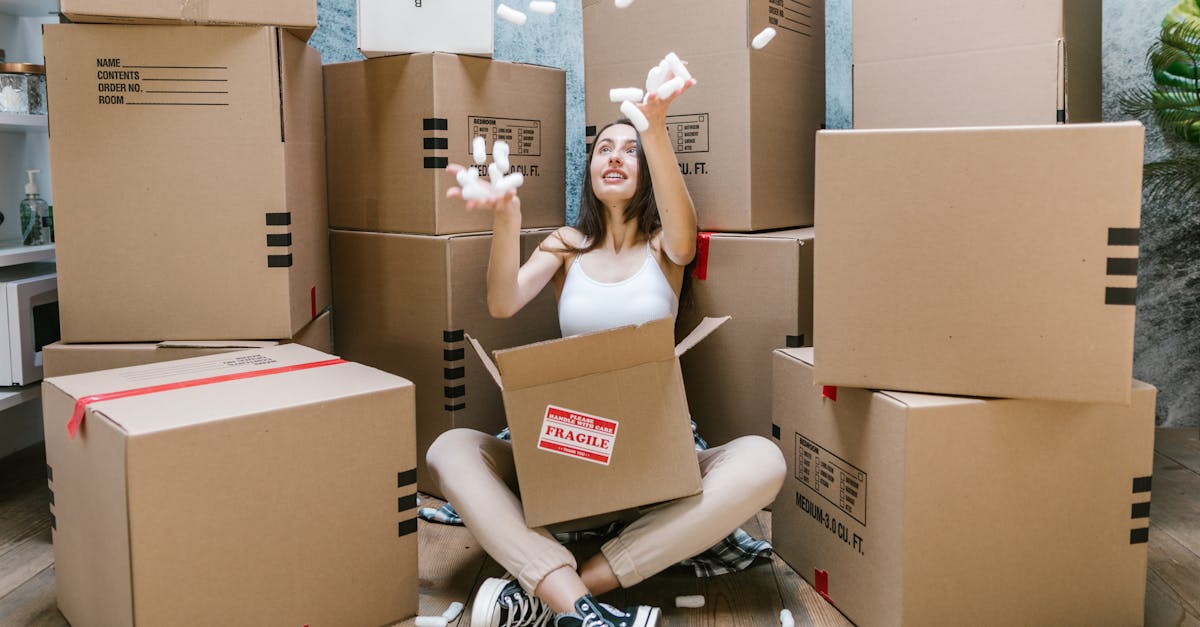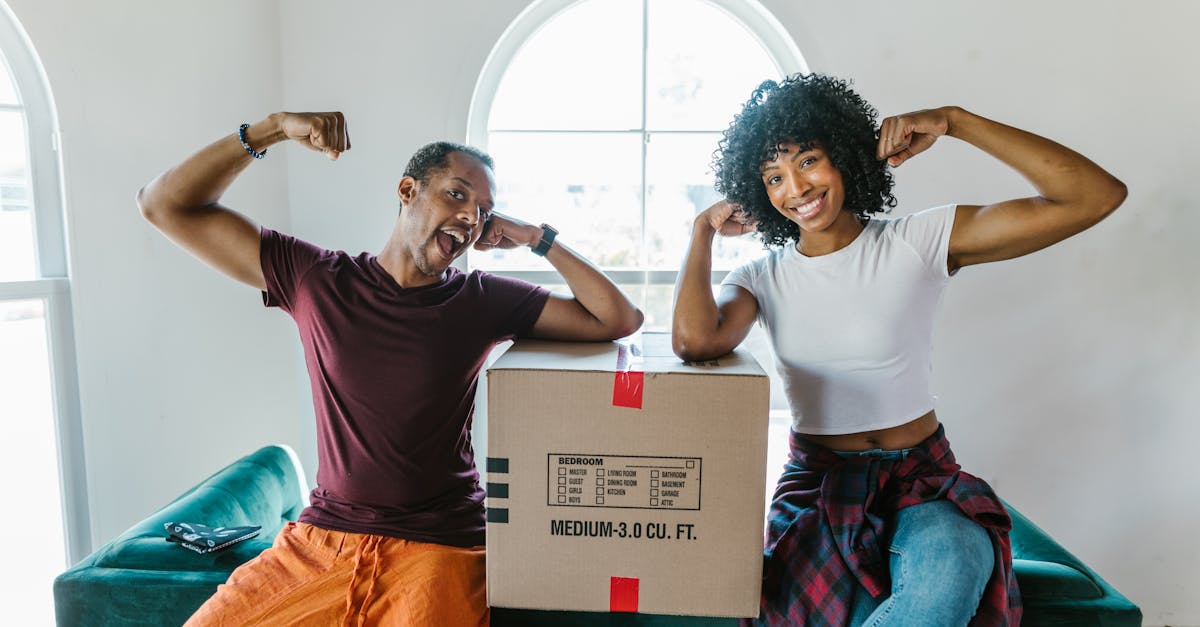Embarking on a move can be an exhilarating yet daunting task. As you prepare to uproot your life and settle into a new home, the process of packing can become overwhelming. From deciding when to start packing to ensuring a smooth transition, there are numerous factors to consider along the way.
In this comprehensive article, we will guide you through the ultimate timeline for when to begin packing for your move. We have crafted an intricate plan that will help alleviate stress and ensure an organized relocation process. Whether you are a meticulous planner or tend to procrastinate, we have got you covered with tips and strategies that will make packing and moving an efficient and hassle-free experience.
The Early Birds: When to Start Packing for Your Move
Embarking on a move can be both exciting and overwhelming. The key to minimizing stress is to start packing early, allowing ample time to sort and organize your belongings. By beginning the packing process well in advance, you can ensure a smoother transition and avoid the last-minute rush that often leads to forgetfulness or chaos.
So, when should you start packing for your move? As a general rule of thumb, it is best to begin at least six weeks before your scheduled moving day. This gives you plenty of time to assess what items you want to take with you, what should be donated or sold, and what can be discarded. By starting early, you can approach each room methodically instead of frantically throwing items into boxes.
However, if you have a large house or an extensive collection of belongings, it may be wise to add a few extra weeks to the recommended timeline. This will allow for more thorough sorting and decluttering without feeling rushed or overwhelmed. Remember that starting early not only ensures a smoother transition but also provides an opportunity for reflection as you decide which possessions truly hold value in your life.
 The Middle Stage: Creating a Packing Schedule
The Middle Stage: Creating a Packing Schedule
Once you have made the decision to move, creating a packing schedule becomes an essential part of your moving strategy. This middle stage is where you shift from mere planning to practical action. By devising a well-structured packing schedule, you can ensure that the packing process remains organized and stress-free.
Begin by assessing the size of your move and the available time frame. Consider factors such as the number of rooms, furniture, and belongings that need to be packed. Break down your packing tasks into manageable chunks, allowing yourself enough time for each one.
It’s vital to prioritize your packing schedule based on urgency and necessity. Start with non-essential items like seasonal decorations or artwork that will not be needed until after settling in. Gradually progress towards more essential items such as kitchen utensils or clothing for daily use.
A Comprehensive Moving Plan: Mapping Out the Details
Embarking on a move can be both exciting and overwhelming. However, with a comprehensive moving plan in place, you can navigate through this transitional period smoothly. By mapping out the details of your move, you will gain a sense of control and ensure that nothing falls through the cracks.
To begin your moving plan, start by assessing your specific needs and requirements. Consider the size of your home, the number of rooms, and the amount of belongings you possess. This initial evaluation will provide you with a clear understanding of the scope of your move.
Next, it’s crucial to create a timeline for your moving process. Determine a desired moving date or range and work backward from there. Consider factors such as lease agreements, utility activation dates, and any other time-sensitive commitments.
Packing Preparation: Tips and Tricks for an Organized Move
Moving to a new home can be overwhelming, but with the right preparation, you can turn it into a smooth and organized process. Packing is a crucial aspect of any move, and by following some helpful tips and tricks, you can ensure that your belongings are well-protected and easily accessible when you arrive at your new destination. Here are some expert suggestions to help you achieve an organized move:
1. Sorting and Decluttering
A well-organized move starts with sorting through your belongings and decluttering. Take the opportunity to assess each item before packing it. Consider donating or selling things that no longer serve you, reducing the number of items you need to pack. This process not only simplifies your move but also gives you a fresh start in your new space.
To streamline this process, create three categories: keep, donate/sell, and discard. As you go through each room, be objective about what is truly essential in your everyday life. Remember that downsizing can lead to a more minimalist lifestyle while freeing up space for meaningful possessions.
By decluttering before packing, not only will you save time during the move but also create a more serene atmosphere in your new home—a space unburdened by unnecessary belongings.
2. Collecting Packing Materials
Once decluttering is complete, it’s time to gather all necessary packing materials for an organized move. Start by obtaining sturdy moving boxes in various sizes—smaller ones for heavy items like books and larger ones for bulkier objects such as bedding or kitchen appliances.
In addition to boxes, consider acquiring other essential supplies such as bubble wrap for fragile items like glassware or artwork; packing tape to secure boxes; packing paper to wrap delicate objects; and markers to label and identify each box’s contents. Having these materials readily available will make the packing process more efficient and prevent any last-minute rushes to gather supplies.
While purchasing new boxes is an option, eco-conscious individuals can explore alternatives by getting used boxes from local stores or reaching out to friends and family who recently relocated. This not only reduces waste but also provides an opportunity for community engagement during your moving journey.
 Your Moving Checklist: Essential Tasks to Tackle
Your Moving Checklist: Essential Tasks to Tackle
When it comes to moving, staying organized is the key to success. To ensure a smooth transition from your old abode to your new haven, it’s crucial to have a comprehensive moving checklist at hand. This checklist will serve as your guiding light throughout the entire packing process, alleviating any unnecessary stress and ensuring that no task goes overlooked.
The first task on your moving checklist should be decluttering. Take this opportunity to go through your belongings and decide what is worth bringing with you to your new home. Don’t be afraid to let go of items that no longer serve a purpose in your life. By downsizing, you’ll not only create more space in your new home but also reduce the overall cost of the move.
Next on the checklist is gathering supplies. Stock up on sturdy boxes in various sizes, packing tape, bubble wrap, markers for labeling purposes, and any other materials you may need for safe and efficient packing. Having all the necessary supplies readily available will save you time and prevent unnecessary trips to the store while in the midst of packing.
The Big Day: Setting the Moving Date
When it comes to planning a move, setting the moving date is a crucial step that requires careful consideration. The timing of your move can greatly impact the overall experience, so it’s essential to choose a date that suits your needs and ensures a smooth transition. By taking into account various factors such as availability, weather conditions, and personal circumstances, you can orchestrate a seamless move that leaves you feeling confident and excited for the journey ahead.
One important aspect to consider when setting the moving date is availability. Ideally, you should aim to schedule your move during a time when moving companies are less busy. Typically, this means avoiding peak seasons such as summer months or weekends when demand is high. By choosing an off-peak time, you not only increase the chances of securing your preferred moving company but also potentially benefit from more competitive rates.
Weather conditions play another significant role in determining your moving date. While we can’t control Mother Nature’s whims entirely, researching climate patterns for your current and new location can help you anticipate any potential challenges. Extreme weather conditions like heavy rain or snowstorms may hinder the progress of your move and pose risks to both you and your belongings. Therefore, selecting a favorable window of time with more predictable weather can minimize any disruptions and ensure a safer relocation experience.
Packing Timeline: Breaking It Down Room by Room
When it comes to packing for a move, one of the most crucial aspects is to break down the process room by room. This approach allows you to tackle each space systematically and ensures nothing gets left behind. Here, we will guide you through the packing timeline, offering insightful tips and tricks for each room in your home.
The Kitchen: Where Culinary Magic Happens
Ah, the heart of every home – the kitchen! Packing up this bustling space can indeed feel overwhelming. Start with non-essential items such as rarely used appliances or specialty cookware. Remember to properly wrap delicate glassware and pack them securely in sturdy boxes lined with bubble wrap or packing paper. As you work your way through cupboards and drawers, declutter by donating unused or expired food items. Safely pack any remaining perishables on moving day or consider donating them to a local food bank.
Next, move on to larger kitchen appliances like refrigerators and ovens. Give them a thorough clean before disconnecting and ensure all loose parts are securely wrapped or taped together. Don’t forget to tape shut any food containers that might spill during transportation.
Thought-provoking tip: While packing up your kitchen, take a moment to appreciate all the memories made around family meals and late-night snacks. Soon enough, you’ll be creating new culinary adventures in your new abode!
The Bedroom: Serenity for Restful Nights
Your bedroom is a sanctuary – a place where you unwind after long days. Begin by sorting through clothes, shoes, and accessories. Consider donating items that no longer bring you joy or haven’t been worn recently (we’re looking at those clothes from high school!). Properly fold clothing items before placing them in sturdy boxes or garment bags, ensuring fragile fabrics are protected.
For bedding and linens, pack them in clear plastic bags to keep them clean during transit. Label the bags so that you can easily identify which bedding goes where when unpacking. Disassemble any bed frames or bulky furniture carefully, keeping track of screws and small parts by storing them in labeled bags.
Thought-provoking tip: As you pack up your bedroom, reflect on the restful nights you’ve had in that space and envision the peaceful slumbers awaiting you at your new home. Sweet dreams await!
Start Packing for Your Move: Where to Begin
Embarking on the packing process can be overwhelming, but with a well-planned approach, you’ll be able to maintain your sanity and ensure a smooth transition to your new abode. The key is to start early and tackle one room at a time, beginning with the areas that are used less frequently.
Begin by identifying the spaces that are not essential for your daily routine. This could include guest rooms, storage areas, or even the attic. By starting with these less-utilized spaces, you can make progress without disrupting your regular life too much.
Once you’ve determined which rooms to pack first, it’s time to gather the necessary supplies. Stock up on high-quality packing materials such as sturdy boxes in various sizes, bubble wrap, packing tape, and markers. Having everything you need from the get-go will streamline the process and minimize last-minute trips to the store.
Moving with Ease: Strategies for Organization and Efficiency
When it comes to moving, organization is key. By implementing smart strategies and focusing on efficiency, you can transform the daunting task of packing into a smooth transition. Here are some valuable tips to help you move with ease:
1. Categorize your belongings
To ensure a streamlined packing process, start by categorizing your belongings into different groups. Create labels or color-coded tags for each category, such as clothes, books, kitchenware, or electronics. This will enable you to easily identify the contents of each box and prioritize unpacking after your move. Remember, a well-organized packing system leads to an efficient unpacking experience.
Creative Tip: Take inventory of your possessions as you pack them. Snap photos of any valuable items and keep a digital record for insurance purposes. This not only adds an extra layer of protection but also provides peace of mind during the moving process.
2. Pack strategically
When it comes to packing boxes, take a thoughtful approach by using sturdy containers that are appropriate for each type of item. Fragile belongings should be wrapped in bubble wrap or surrounded by soft materials like clothing or towels for added protection during transit. Additionally, make sure to label boxes clearly with the corresponding category and its designated room in your new home.
Creative Tip: As you pack fragile items like glassware or delicate figurines, tuck in small notes with positive affirmations or inspirational quotes alongside them – little surprises that will bring joy when unwrapping these precious pieces at your new destination.
3. Create an essentials box
To ensure that you have immediate access to important items upon arrival at your new home, put together an essentials box. This box should include necessities such as toiletries, a change of clothes, bed linens, important documents, and any other items you’ll need in the first few days. By having these essentials readily available, you can settle in smoothly without having to rummage through multiple boxes.
Creative Tip: As a little treat for yourself amidst the stress of moving, add a small token or keepsake that holds sentimental value to your essentials box. This will remind you of the love and memories you carry with you as you embark on this new chapter.
By implementing these strategies for organization and efficiency, your moving experience will be transformed into a well-orchestrated symphony. Remember to stay positive throughout the process and envision your new home filled with possibilities. Happy moving!
 A Smooth Transition: Finalizing the Packing Process
A Smooth Transition: Finalizing the Packing Process
As the moving day draws near, it’s essential to ensure a smooth transition by finalizing the packing process. This stage requires meticulous attention to detail and a dash of organization prowess. By following these steps, you can bid farewell to stress and embrace the exciting new chapter awaiting you in your new home.
Tidy Up Loose Ends
Before sealing those last boxes, take a moment to tidy up loose ends in your old space. Conduct a thorough walkthrough of each room, ensuring nothing is left behind. Check closets, drawers, and cabinets for any forgotten items. Remember to inspect hard-to-reach places like crawl spaces and attics as well. By leaving no stone unturned, you can rest assured that everything has been accounted for.
A creative way to approach this final stage is by envisioning your new home as a fresh canvas awaiting your personal touch. Embrace the excitement of starting anew by mentally bidding farewell to your old space while eagerly anticipating all the possibilities that lie ahead in your new abode.
The Art of Labeling
Now comes an often-overlooked task that can significantly ease unpacking at your destination: labeling. Take extra care when labeling each box with its contents and designated room in clear, legible handwriting or using printed labels.
Consider using vibrant color-coded labels or stickers for added organizational flair: assign each room in your new home with a specific color and match it to its corresponding boxes. This technique not only helps professional movers place each box precisely where it needs to be but also makes unpacking an enjoyable treasure hunt within the sea of labeled cartons.
Adopting an optimistic perspective on this task can turn labeling into an artistic endeavor—imagine yourself as a curator skillfully organizing your belongings, ensuring a seamless transition and an aesthetically pleasing arrangement in your new household.
Prepare an Essentials Box
In the midst of the hustle and bustle on moving day, it’s easy to misplace or overlook crucial items that you’ll need immediate access to in your new home. To avoid unnecessary stress, create an essentials box containing all your must-have items.
Include items such as toiletries, a change of clothes, bedding, important documents, and any other necessities required for the first few days in your new space. By organizing this box with care and intention, you can embark on your moving adventure with peace of mind knowing that everything you need is readily available.
Approach the task of preparing this essentials box as a way to pamper yourself: pack it with comforting items that will make you feel at ease during those initial moments in your new home. Embrace the excitement of starting afresh by curating a collection of belongings that symbolize comfort and familiarity.
Conclusion
In conclusion, embarking on a move can be an overwhelming experience, but with the right timeline and packing strategy, you can turn it into a smooth and organized process. By starting early, creating a detailed schedule, and following practical tips for packing, you can alleviate stress and ensure a successful transition to your new home. Remember, each step along the way contributes to the bigger picture of a well-executed move. So embrace this exciting chapter in your life with optimism and confidence, knowing that you have taken the necessary steps to pack up your belongings efficiently and embark on a new adventure. Happy moving!






